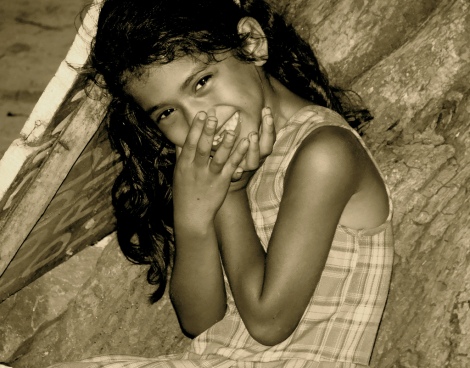May 17, 2009 Paz a través de mis ojos (Peace Through My Eyes), Verena Bunge & Elana Hazghia’s 2009 Project for Peace

Photo Courtesy of Saskia Bunge
Project Objective
Our Davis Projects for Peace aims to promote peace and cross-cultural understanding through the artwork of Guatemalan children from different socioeconomic and ethnic backgrounds. What does peace mean to the indigenous children of Sololá in comparison to the children of Guatemala City? Our project, “Paz a través de mis ojos” (Peace Through my Eyes) will create a three week summer arts program: one taught in a private school in Guatemala City, and the other in San Marcos La Laguna in the region of Sololá. Both groups of children will learn essential art and photography skills and compile a portfolio based on the theme of “Peace Through My Eyes”. The final works will be exhibited in a ceremony that will bring both groups of kids together at the end of the program. During the fall of 2009, the Tang Museum at Skidmore College will help sponsor an auction event. The money raised will be brought back to the community in San Marcos La Laguna to buy one water filter for each family in the area ($35 each) as a fresh water source, since Lake Atitlán is polluted. Our goal is to open a dialogue between these two separated communities based on mutual understanding and common visions of peace.
We also hope to show external communities the potential of children in poverty when given the proper resources and creative outlets. By hearing the voices of children through their creative expressions, the international community can begin to build peace and build bridges between different groups of people. Through the silent power of art, this project will transcend boundaries that keep us from understanding our fellow global citizens.
Background Information:
Although Guatemala gained its independence from Spain in 1821, the country suffered years of governmental oppression under various military juntas. Starting in the early 1960’s, guerrilla armies and revolutionary insurgents began responding to the Guatemalan government, which had strict control over all aspects of citizens’ lives. The military had controlled the government for many years, and this was intensified in the 1954 US-sponsored coup that instituted the right wing regime of Carlos Castillo Armas. It is at this point that the struggle of ideology and fight between the guerilla and government grew, the conflict lasted until 1996 when the Peace Treaties were finally signed by members of both the government and the revolutionaries.
In order to build peace between and within these communities, there must be a mutual level of understanding. Cross-cultural understanding can only be achieved through communication. For the purposes of our project, art is the means of communication that will develop understanding, and ultimately build peace. Developing peace among diverse peoples is not a process with a beginning or end, but one that can continue to develop and flourish over time if the seeds are planted in the right place. The civil war in Guatemala has ended, but the country remains economically, politically, socially, and culturally divided between the upper and middle classes that mostly live in Guatemala City and the indigenous population that live in the rural countryside. Our project is targeted at these two vastly different groups of children in hopes of discovering that all people, despite their backgrounds, have dreams of peace. Their portfolios will illustrate the similarities and differences between their visions of peace and how all children have the potential to express themselves through art.
- Leave a comment
- Posted under Uncategorized
Leave a comment